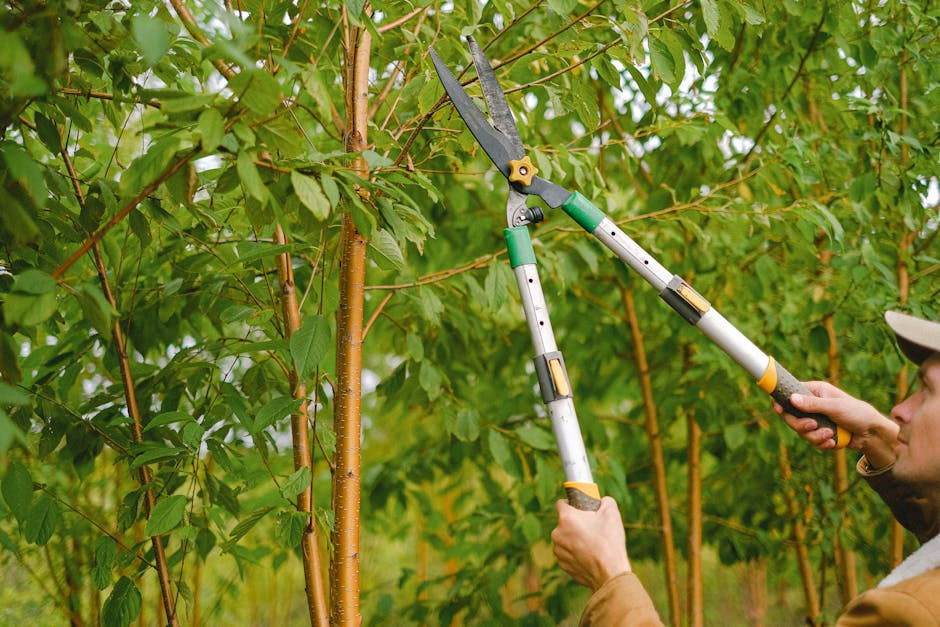The Art of Pruning: Tips and Tricks for Using Pruners Effectively
- Green Landing Co
- Aug 22, 2024
- 3 min read
Pruning isn't just about cutting back plants; it's an art that can enhance the beauty and health of your garden. This guide will share the essential tips and tricks to make the most of your pruners, ensuring your plants thrive.

Understanding the Basics of Pruning
Pruning is much more than the simple act of snipping and trimming—it's a crucial gardening practice that encourages healthy growth and flowering. At its core, pruning helps control the size of your plants, removes dead or diseased limbs, and promotes a lush, bountiful garden. By understanding the basics, you equip yourself with the knowledge to make informed decisions on how and when to make those crucial cuts.
One fundamental principle of pruning is knowing that not all plants need it in the same way. Deciduous trees, for example, might require a different approach compared to perennial flowers or shrubs. This diversity in pruning needs makes it an art form, where the goal is not just the act itself, but the continued health and aesthetic appeal of your garden.
Choosing the Right Pruners for Your Garden
The market is flooded with various types of pruners, each designed for specific tasks within your garden. The two main types you'll encounter are bypass pruners and anvil pruners.
Bypass pruners, with their two curved blades that pass by each other like scissors, are perfect for making precise cuts on living plants. Anvil pruners, on the other hand, have one straight blade that closes onto a flat edge and are more suited for dead wood and harder materials.
Your choice of pruner can greatly influence the health and outcome of your pruning efforts. Hence, investing in high-quality pruners that fit comfortably in your hand and suit your garden's needs is crucial. Remember, well-crafted pruners not only last longer but also make the pruning process smoother and more enjoyable.
Techniques for Effective Pruning
Effective pruning goes beyond random trimming; it's about knowing when to cut and how much. A good rule of thumb is to prune during the plant's dormant season to avoid shocking the plant or inviting disease. Additionally, making clean cuts at a 45-degree angle just above a bud or branch ensures that water runs off the cut, reducing the risk of disease.
When it comes to shaping bushes or trees, it's essential to maintain the plant's natural form.
Over-pruning or incorrect cutting can lead to poor plant health and unsightly growth patterns. Remember, patience and precision are your friends, guiding you to make thoughtful cuts that promote healthy growth while keeping your garden looking its best.
The Best Time to Prune Different Plants
Timing is everything in pruning. While most plants benefit from being pruned in late winter or early spring before they break dormancy, there are exceptions. For instance, spring-blooming shrubs should be pruned immediately after they flower since they set next year's buds soon after. Understanding the growth cycle of your plants is key to maximizing the benefits of your pruning efforts.
Pruning Tips for Healthy Plant Growth
A well-pruned garden is not just about aesthetics; it's also about promoting healthy plant growth. Removing dead or diseased branches helps prevent the spread of disease, while thinning out crowded areas increases air circulation, reducing the likelihood of fungal infections. Regular pruning also encourages plants to develop a stronger structure, capable of withstanding the elements.
Safety First: How to Use Pruners Safely
Pruning can be a fulfilling activity, but it's important to approach it safely to prevent injuries. Always wear gloves to protect your hands from thorns and rough bark, and consider safety goggles when tackling larger branches to shield your eyes from debris. Keeping your pruners sharp and clean not only makes for easier cuts but also reduces the strain on your hands, minimizing the risk of repetitive strain injuries.
Maintenance and Care for Your Pruners
Proper maintenance of your pruners extends their life and ensures they're ready for the next pruning session. Regularly cleaning the blades to remove sap and debris, drying them thoroughly to prevent rust, and applying a light oil to the moving parts keeps them in top condition. Additionally, sharpening the blades at the first sign of dullness ensures precise cuts, making your pruning tasks more efficient and enjoyable.
Cultivating Your Garden Masterpiece
Mastering the art of pruning with the right techniques and a little patience can transform your garden into a vibrant haven. Remember, the key to effective pruning is understanding the needs of your plants and practicing. Soon, with pruners in hand, you'll be sculpting your garden into a masterpiece.

Comments